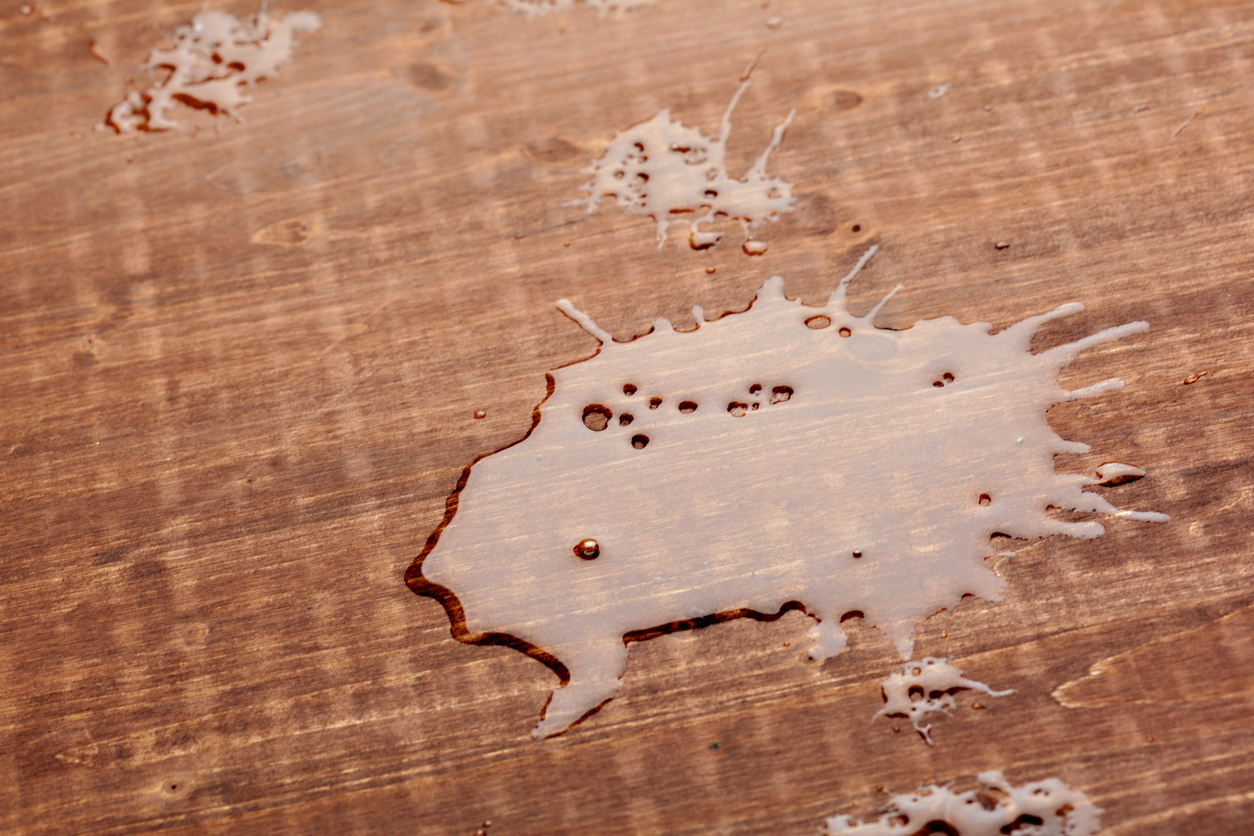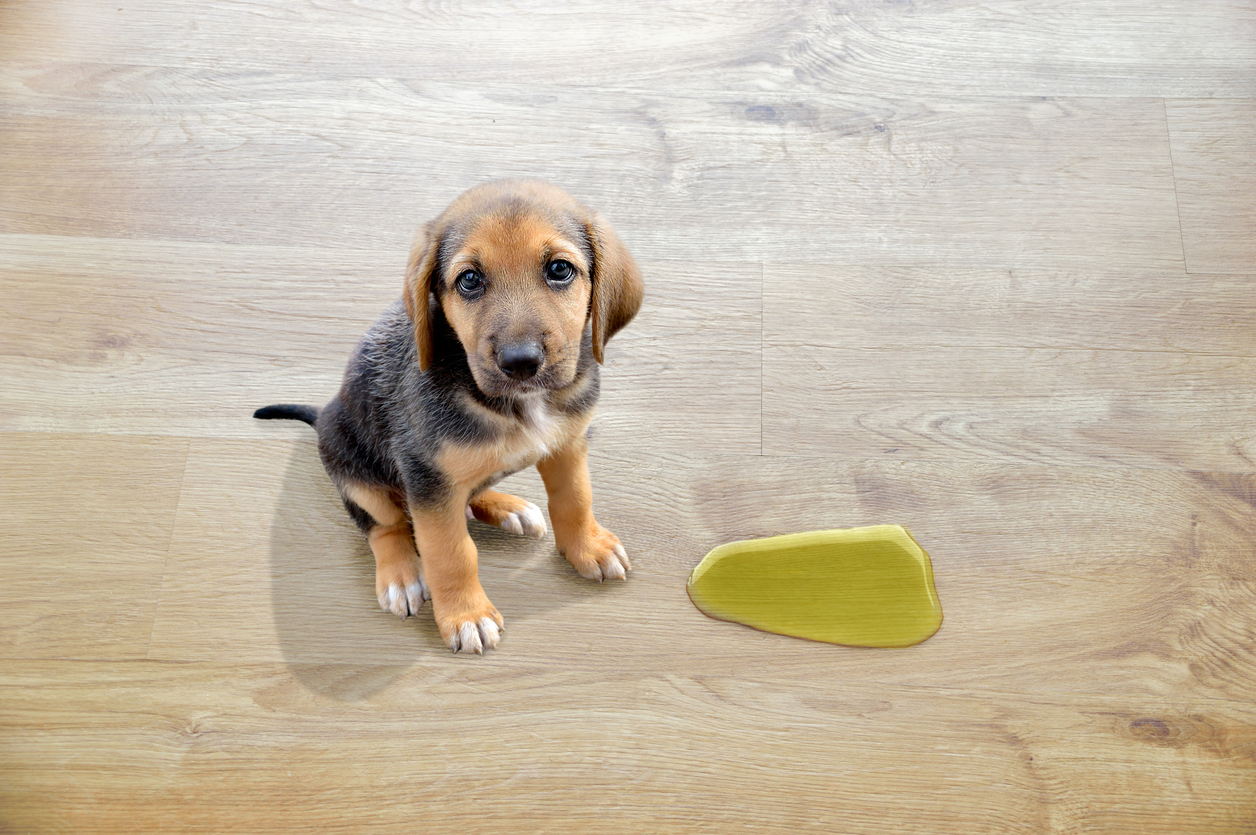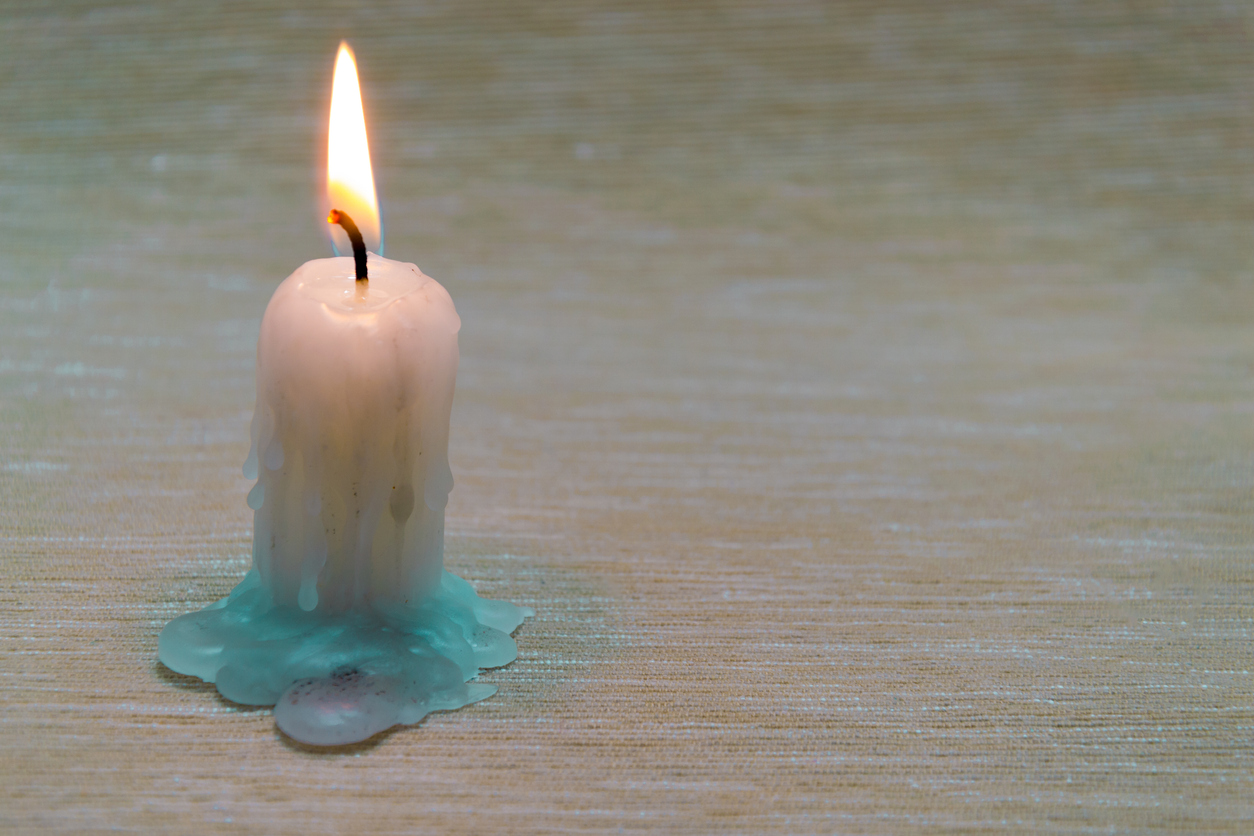How to Remove Wood Floor Stains
By Robbins Flooring Expert, Published August 20, 2025
There’s nothing more frustrating than seeing an ugly stain on your solid hardwood floors. Unfortunately, wood is a porous material. As a result, it absorbs liquids and oils, making the removal of stains challenging.
Moreover, each hardwood species has unique stain-resistance properties. Generally, the harder the wood, the more resistant it will be to staining. For example, hickory and maple resist staining more than softer pine wood floors.
Additionally, the type of finish or sealant applied can affect how stains penetrate the wood. Over time, even aging and wear can influence stain removal.
Fortunately, more often than not, you can remove the stain and return to enjoying your floors. The first rule of thumb is to act quickly. The sooner you tackle the stain, the better your chances of removing it.
You’ll also want to avoid using abrasive products as they can remove the floor’s finish.

Assess the Stain
Stubborn stains on wood floors can take different forms:
- Watermarks
- Grease
- Oil
- Ink
- Pet Urine
- Candle Wax
Start by assessing the severity of the stain and identifying its source, which is crucial before attempting to remove it. Be aware of the potential risks of stain removal, such as damaging the floor’s finish.
Next, gather the right tools and materials. Soft cloths, microfiber cloths, mineral spirits, and gentle wood floor cleaners or mild soaps are essential for effective stain removal. More stubborn stains might require agents like hydrogen peroxide or white vinegar.
Testing the cleaning solution in an inconspicuous area is always a good idea. That way, you avoid making matters worse by using a product that can further damage your floor.
General Steps for Removing Stains
Generally, stain removal involves pre-treating the stain, gently scrubbing the affected area, and thoroughly rinsing and drying the floor. This approach also applies to solid or engineered hardwood floors.
However, different stain types require other tactics. We’ll explore how to clean stained floors, addressing each stain type. So, let’s start with one of the most troubling: removing cat and dog urine from your hardwood floors.
How to Remove Urine Stains from Hardwood Floors
Whether dog or cat pee, either can leave stubborn stains and, more importantly, unpleasant odors on hardwood floors. In addition to treating the stain, you’ll also need to address the urine smell to return things to normal. Cat urine, in particular, requires quick attention to avoid a lingering cat pee smell.

Here’s a step-by-step guide on how to effectively remove cat urine and dog pee from your hardwood floors:
- Blot the Area: Use paper towels or a clean cloth to blot up the urine. Remove as much as possible from the affected area. Avoid rubbing the stain, which may push the urine deeper into the wood.
- Mix the Cleaning Solution: Mix equal parts distilled white vinegar and water in a spray bottle. White vinegar effectively neutralizes the ammonia in urine.
- Apply the Cleaning Solution: Spray the vinegar and water solution liberally onto the stain. You want to ensure coverage of the entire affected area.
- Let it Sit: Allow the vinegar solution to sit on the stain for 5-10 minutes. This gives the vinegar time to break down the uric acid in your pet’s urine.
- Blot the Area Again: After waiting, use a clean cloth or paper towel to blot the area again. Absorb as much of the vinegar solution and dissolved urine as possible.
- Rinse with Water: Dampen a clean cloth with plain water and gently wipe the area to remove any remaining vinegar residue.
- Dry Thoroughly: Use a dry cloth or towel to pat the area dry. Ensure the wood floor is completely dry to prevent damage or warping.
- Sprinkle Baking Soda: Sprinkle baking soda over the area and let it sit for a few hours or overnight. The baking soda helps neutralize the odor of a dog’s or a cat’s urine. You can vacuum it up afterward.
You might need to repeat the process if the stain or urine smell remains noticeable. You can also include an enzyme cleaner. Enzymatic cleaners break down the area to help eliminate cat and dog odors.
Repeat the process, especially for old or deeply ingrained stains and odors. These steps can effectively remove dog pee and cat urine from your hardwood floors. Equally important, you keep your home smelling fresh and clean.
By the way, companies like Robbins have pet-friendly flooring, ArmourWood™. The engineered hardwood flooring is scratch- and dent-resistant. It’s also waterproof. So you’ll have fewer concerns about staining and odors.
How to Remove Water Stains from Wood Floors
Generally, water stains can be categorized into two types. Light water stains affect the top coating of your flooring. Depending on your water, they can leave mineral deposits on the surface of your floor. For example, hard water can leave lime deposits on your wood floors.
On the other hand, dark water stains penetrate deeper and impact the wood grain. As a result, each requires a different approach to removing a water stain from your wood flooring.
Using mineral spirits, you can easily remove hard water and light-colored stains. Alternatively, you can apply a small amount of toothpaste to the stain to increase abrasion and buff gently.
Just buff either into the area with a soft cloth. Then, let it sit for 12 or more hours to cure. Afterward, smooth the surface, and you should be all set.
You may need to repeat the process if that doesn’t work. However, the more often you do it, the greater the chances you will damage the floor’s finish. If so, use wax or polish to restore the finish.
How to Remove Dark Water Stains from Wood Floors
Unfortunately, dark water stains occur when your floors absorb the liquid. That requires a more aggressive approach, such as sanding the floor. First, let the floor dry.
It’s best to start with coarse sandpaper. Then, you can use finer papers to remove the stain and finish from the wood floor. Once removed, you must reapply a finish to the floor’s surface. Using steel wool to buff the edges to match the old flooring, you can create a seamless look.

How to Remove Candle Wax from a Wood Floor
Of all the stains mentioned, candle wax typically creates the least concern. You can remove it by taking these steps.
First, let the wax cool and harden. You can use an ice cube to set the wax and reduce the scraping needed. Then use a credit card or plastic scraper to remove the wax. Wipe the area, ensuring you remove any remaining water from the ice.
Alternatively, you can use a hair dryer. The heat will melt the wax, making it easy to scrape or wipe away.
You can apply a wood wax to buff the area and remove any residue with either technique.
Robbins® Flooring Offers Stain Resistance
Much of our engineered wood and solid hardwood flooring includes scratch, dent, and stain resistance. This way, you’ll have fewer concerns about addressing unwanted stains from your pets or other issues.
Our Nano Aluminum Oxide finishes create a protective layer against everyday wear and tear. Many of our flooring products include wire brushing or hand scraping to help cover surface imperfections.
Our Rustic Directions collection, for example, features hickory-engineered hardwood with a hand-scraped finish and wide planks.
Find the Robbins dealer nearest to you using our retail locator.
